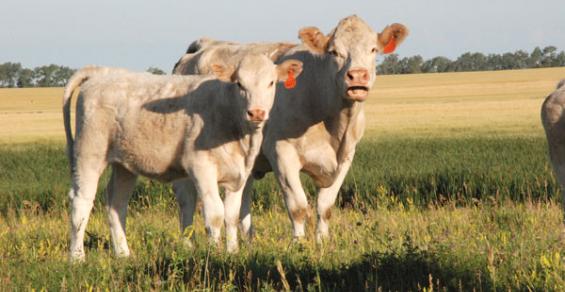I was surprised to see “cow-calf health” as the No. 1 answer to “Choose what you see as the cow-calf industry’s top five challenges” in the survey results reported in the October 2017 BEEF magazine. I wanted to dig deeper, so I contacted Miriam Martin, the Colorado State University graduate student who organized the survey. Here is what Martin wrote to me:
“After reviewing the answers to our question, ‘What is the most important animal health issue facing your operation?’ I saw that many of the challenges mentioned were obstacles to good management, such as drought. Through more intensively managing nutrition, parasitic loads and inclement weather, we can do a better job of improving herd health. By developing a good relationship with a veterinarian who can help create a preventive disease plan catered to the needs of your operation, a holistic approach to managing the needs of the animals can be achieved. It looks like many producers are in need of a complete herd health program for their operations.”
I thought that was a very insightful statement from this graduate student.
Top disease mentions included bovine respiratory disease (BRD), fly control, pink eye, parasites and scours. We’ll save pink eye and parasites for later.
BRD. In the cow-calf herd, BRD should be nonexistent to rare. We mentioned the value of a modified live vaccine (MLV) BRD vaccine at branding and weaning in the June 2017 column. Spend approximately $5 on vaccine to protect your $800 investment, for heaven’s sake!
If you have BRD in your calves, or postweaning, it is likely a combination of lack of immunity (vaccine), a nutritional concern, genetic issues (crossbreeding helps) and environmental factors. Your investigative team should include your herd health veterinarian, nutritionist and Extension beef specialist. Now if you buy unweaned, unvaccinated calves, you’re going to have lots of BRD.
Fly control. Years ago I started working with a new beef producer and on our new client questionnaire under long-term goals he wrote, “Eliminate flies.” I called and told him not to hire me because I was doomed to fail. You cannot eliminate flies if you have livestock. We can help to control them, but never eliminate them.
It’s a bit crazy to talk about fly control in January, so we’ll visit this subject more in my column in April. One thing you need to do early is use one of the insect growth regulators in your cow mineral. Talk to your feed dealer to see what product the dealer recommends. The key is to get it into the mineral 30 days before you anticipate the first flies to emerge. If you can get your neighbors also to use it, that’s even better.
Scours. Where’s the “easy button?” Zero scours is an absolutely achievable goal. Let’s review this timely topic. The keys are:
- Winter bred heifers separately from mature cows — skip this and increase disease 3.6x.
- Don’t winter and calve on the same ground — skip this and increase scours by 3.1x.
- Calve bred heifers separately from mature cows — skip this and increase disease 1.7x.
- Use the Sandhills calving system, the most important point; you have likely heard about this numerous times.
- Calve outside at a time of the year your calves would love to be born. See Martin’s statement earlier about inclement weather.
- Vaccinate heifers and cows precalving, so they develop colostral immunity to common pathogens.
Next time BEEF does a survey, I hope to have more people say what one respondent said: “None. We have very healthy cattle by maintaining high-quality feed, mineral supplements, fly control and selection of breeding stock.” A high five to whoever you are!
Hilton, DVM, PAS, DABVP (beef cattle practice), is clinical professor emeritus, Purdue University College of Veterinary Medicine; and senior technical veterinary consultant, Elanco Animal Health.




Leave A Comment